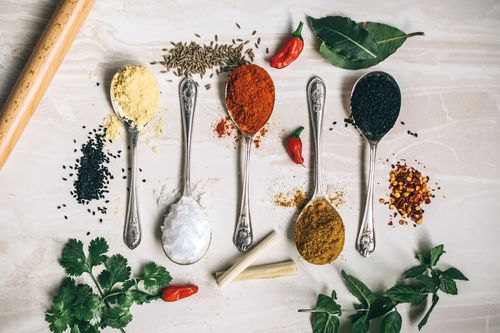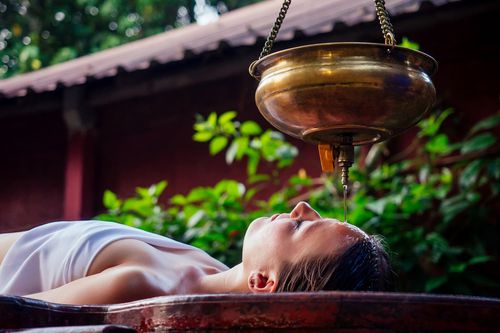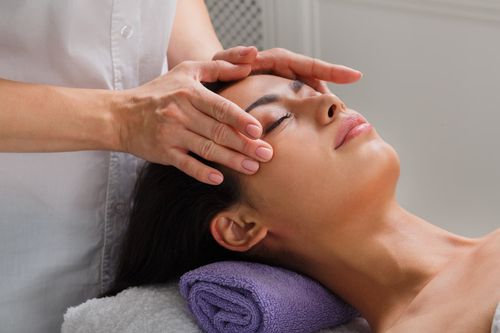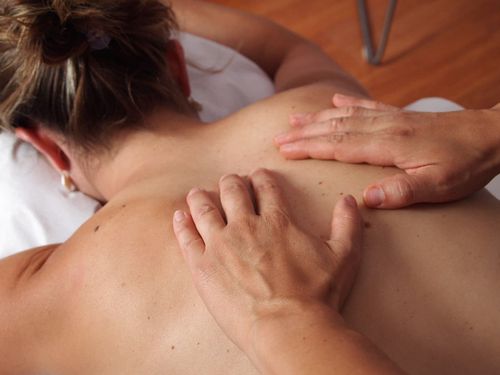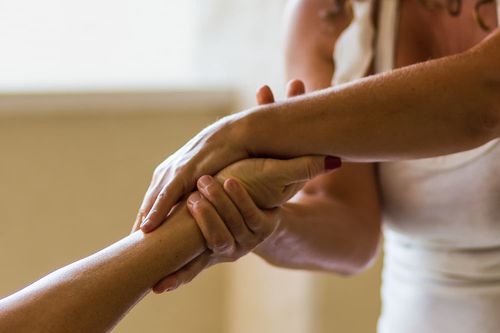What is Ayurvedic Massage?
Ayurveda is an ancient healing system with origins going back more than 3,000 years in India. Ayurveda comes from two Sanskrit words "ayu" which means life and "veda" which means knowledge. Its main objective is to promote good health. The foundations of Ayurveda are based on the belief that the five elements, composed of ether, air, water, earth, and fire, form the building blocks of the Tridosha, the three doshas or energies – Vata (wind), Pitta (bile) and Kapha (mucous) – that make up the chemical nature of the body. Illnesses or diseases may arise when there is an imbalance in the energy flow.
Ayurvedic massage follows the principles of Ayurveda and is used to help in breaking down and eliminating toxins from the physical and subtle bodies. The toxins are referred to as "Ama" and are believed to be the waste products that have been held inside the body. The longer the Ama remains in the body, the more difficult it can be removed. This causes aches and pains which block the flow of Vata energy in the body.

How Does Ayurvedic Massage Work?
Ayurvedic massage releases the obstructions and stagnations to the balanced flow of the doshas. It involves different strokes, depending on the nature of the energy being worked on. Rubbing, squeezing and tapping are the most common strokes in Ayurvedic massage that help the body absorb the warmth of the essential oils used.
The therapeutic effect of the herbs and essential oils help in stimulating the energy flow in the body. Similar to acupuncture, Ayurveda uses a system of trigger points called Marma points to release the built-up tension and improve the flow of lymph and blood in the body. Depending on the treatment's purpose, the massage will be finished off with an energizing wash or scrub with herbal preparation.
What Are the Benefits of Ayurvedic Massage?
Ayurvedic massage works on the surface of the skin to stimulate circulation and support the body's detoxification process. It's a transformational healing modality that works on improving the emotional, mental and physical aspects of one's health. Ayurveda massage offers a host of benefits, including the following:
- Enhances body awareness
- Clears the physiological and energetic pathways
- Creates deep relaxation
- Helps in detoxification and cleansing
- Boosts the immune system
- Improves circulation
- Helps in addressing medical conditions
- Increases vitality
- Maintains good health
- Balances Vata, Pitta and Kapha doshas
- Promotes healthy skin
- Treats hormonal imbalance
- Reduces stress
- Relieves anxiety and depression
- Calms the nervous system
- Soothes the body and mind
- Reverses premature signs of ageing
What Can You Expect From Ayurvedic Massage?
Before your Ayurveda massage treatment begins, the therapist will ask questions about your health condition, diet and lifestyle, and then come up with a treatment plan tailored to your needs. A mixture of essential oils is heated and applied directly onto your skin to hydrate and nourish it, and then the massage treatment ensues.
The strokes used in Ayurvedic massage vary from superficial to deep. There are three types of strokes – active (involves strong pressure), passive (involves delicate stroking) and persuasive (involves pinching or kneading the muscles with the forefinger and thumb).
Before the session, the therapist meditates and may recite a prayer to properly focus his or her energy. Then, the therapist synchronises his or her breathing with the client's to maintain a deep interconnection which creates a relaxing yet enlivening disposition. This in turn brings about a sense of whole-body integration and alignment to the client. If you prefer to receive a soothing Ayurvedic massage in the comfort of your home, you can do so. All you have to do is reach out to an Ayurvedic massage therapist who offers online massage consultation.
The massage can last from 30 to 90 minutes.This could be followed with a herbal steam wherein a herbal infusion is steamed and used to loosen up the toxins in your body in preparation for their elimination.
